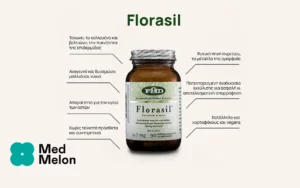Acacia farnesiana (L.) Willd., (Sweet Acacia – Syn.: Mimosa farnesiana L.), Acacia senegal (L.) Willd. (Senegal Acacia) and other Acacia species [Fam. Leguminosae]
Forms:
Flowers and gum of Acacia species used for making tea
Traditional Usage:
Antispasmodic
Catarrh
Colds and Flu, Bronchitis, Sore Throat
Constipation
Coughs
Demulcent (soother)
Diarrhea
Fever
Headaches
Laxative
Poultice
Rheumatism
Skin Disorders
Overview:
Acacia flowers, Acac. farnesiana (L.) Willd., Acac. senegal (L.) Willd. and other Acac. species [Fam. Leguminosae], are collected from small trees or bushes that thrive on dry, sandy soils throughout many tropical areas of the world. Acacia farnesiana is native to southern France, tropical America and other tropical countries. Acacia senegal inhabits Africa and Egypt and yields the most valuable gum of commerce. Acac. vera (A. arabica) occurs near the Nile and is known as the Egyptian gum Arabic, native to Egypt, Arabia, India, southern Asia and upper Africa. Gum arabic is nutritive and demulcent, and soothes irritated or inflamed mucous membranes by coating them with a layer of mucilage. Gum arabic has been used traditionally for treating diarrhea, dysentery, painful stools (and in laxatives to soothe their effects) and urinary system problems. The gum is also used for treating catarrh, coughs, and hoarseness. In acute diseases, where it becomes necessary to use the lightest and most readily digestible food, gum arabic may be used. The distilled flowers of sweet acacia, A. farnesiana, are used in perfumes throughout Europe and India. The pods and bark are used for tanning and dying leather. All parts of the plant have medicinal properties. Acacia flowers are believed to be alterative, antispasmodic, astringent, demulcent, and stimulant, and in folk tradition are given to treat diarrhea, fever, rheumatism, and sexual disorders. They are also used externally as poultices for headaches, skin sores and ulcers. The bark, leaves, and roots are astringent and demulcent and are given for sore throat, leucorrhea, diarrhea, uterine hemorrhaging, abnormal growths, and ulcers. The pods are used for conjunctivitis, rheumatism, dysentery and skin eruptions. Dr. James Duke (1985) notes that none of these claims have been substantiated with clinical evidence. Scientists are researching the bronchodilator and anti-inflammatory properties of Acacia farnesiana.
Active Ingredients:
Acacia farnesiana L. contains anisaldehyde, benzoic acid, benzyl alcohol, butyric acid, coumarin, cresol, cuminaldehyde, decyl aldehyde, eicosane, eugenol, farnesol, geraniol, hydroxyacetophenone, methyleugenol, methyl salicyclate, nerolidol, palmitic acid, salicylic acid, and terpineol. Acacia senegal L. contains arabic acid, a polysaccharide composed of L-arabinose, L-rhamnose, D-galactose, and D-glucuronic acid in different molar ratios. (Duke 1985)
Suggested Amount:
Gum arabic may be used liberally as a food. Teas containing acac. flowers (often found in laxative preparations) should be used according to manufacturer label instructions.
Drug Interactions:
None known.
Contraindications:
None known.
Side Effects: Scrutiny of the experimental evidence of safety demanded by the international food safety authorities has led them to conclude that no limitation to the use of gum arabic as a food additive need be specified when it conforms to the established criteria of identity and purity. This brief review collates the dietary, toxicological, immunological, chemical and other studies available. [Anderson DM. 1986. Evidence for the safety of gum arabic (Acac. senegal (L.) Willd.) as a food additive–a brief review. Food Addit Contam. 1986 Jul-Sep; 3(3): 225-30].
References:
Sotohy SA, Muller W, Ismail AA. “In vitro” effect of Egyptian tannin-containing plants and their extracts on the survival of pathogenic bacteria. Dtsch Tierarztl Wochenschr. 1995 Sep; 102(9): 344-8.
Trivedi CP, Modi NT, Sarin RK, Rao SS. Bronchodilator and anti-inflammatory effect of glycosidal fraction of Acacia farnesiana. Indian J Physiol Pharmacol. 1986 Jul-Sep; 30(3): 267-8.




